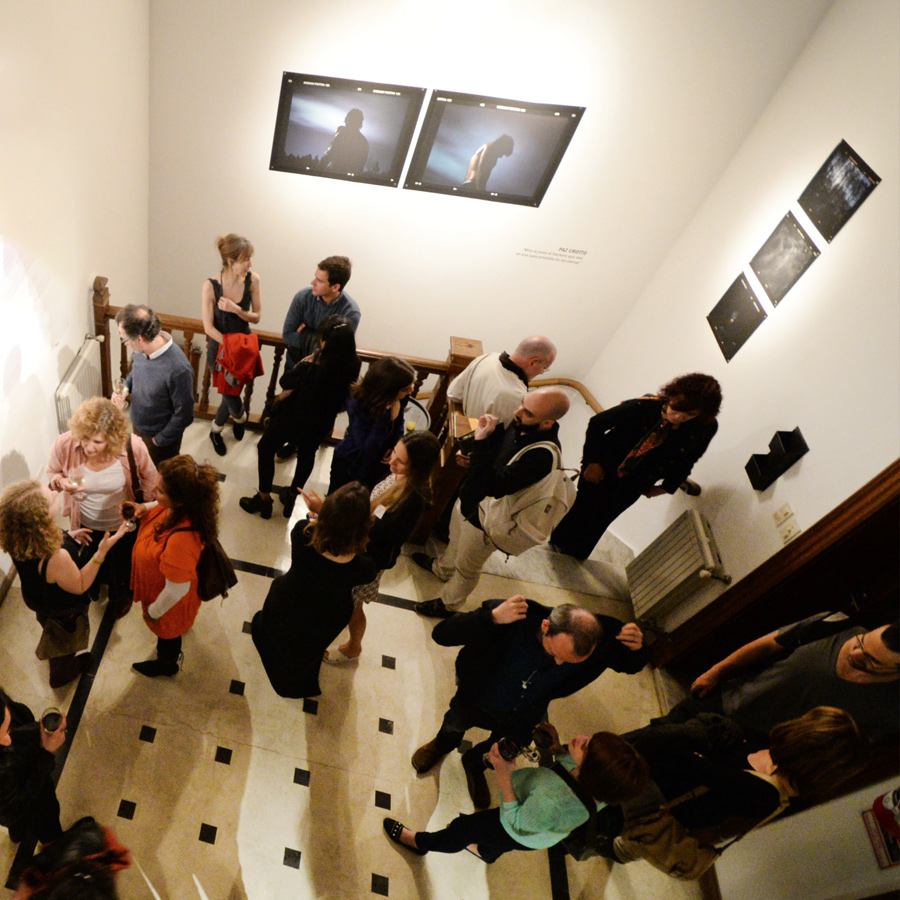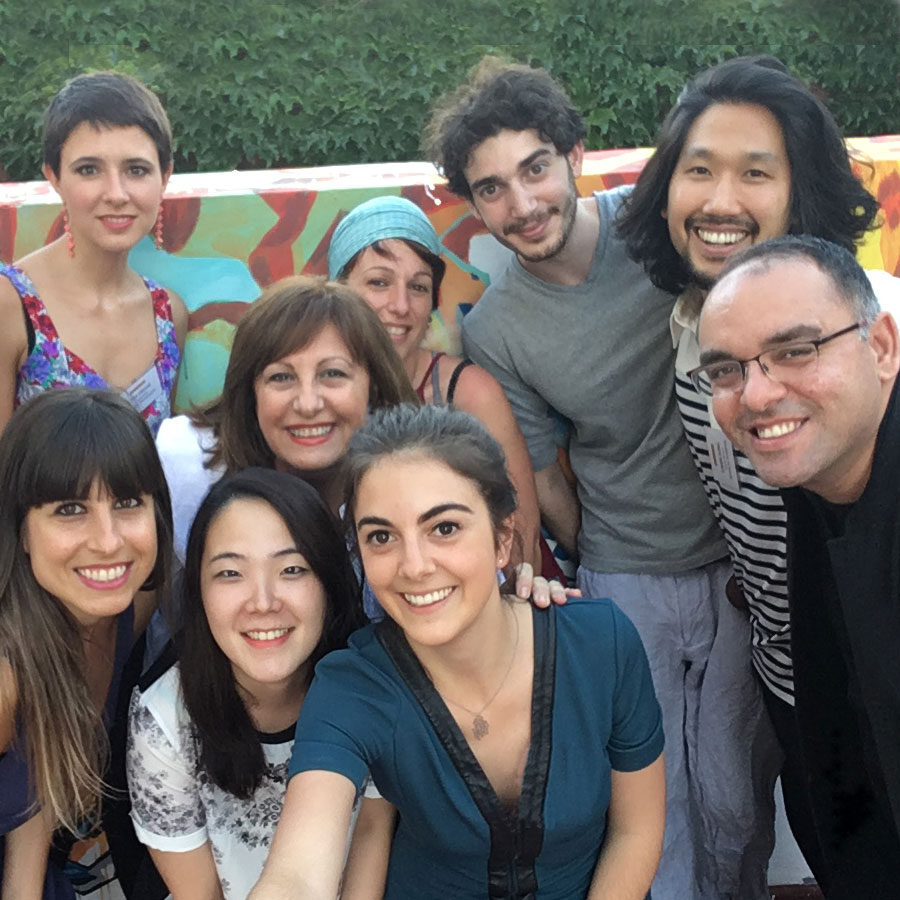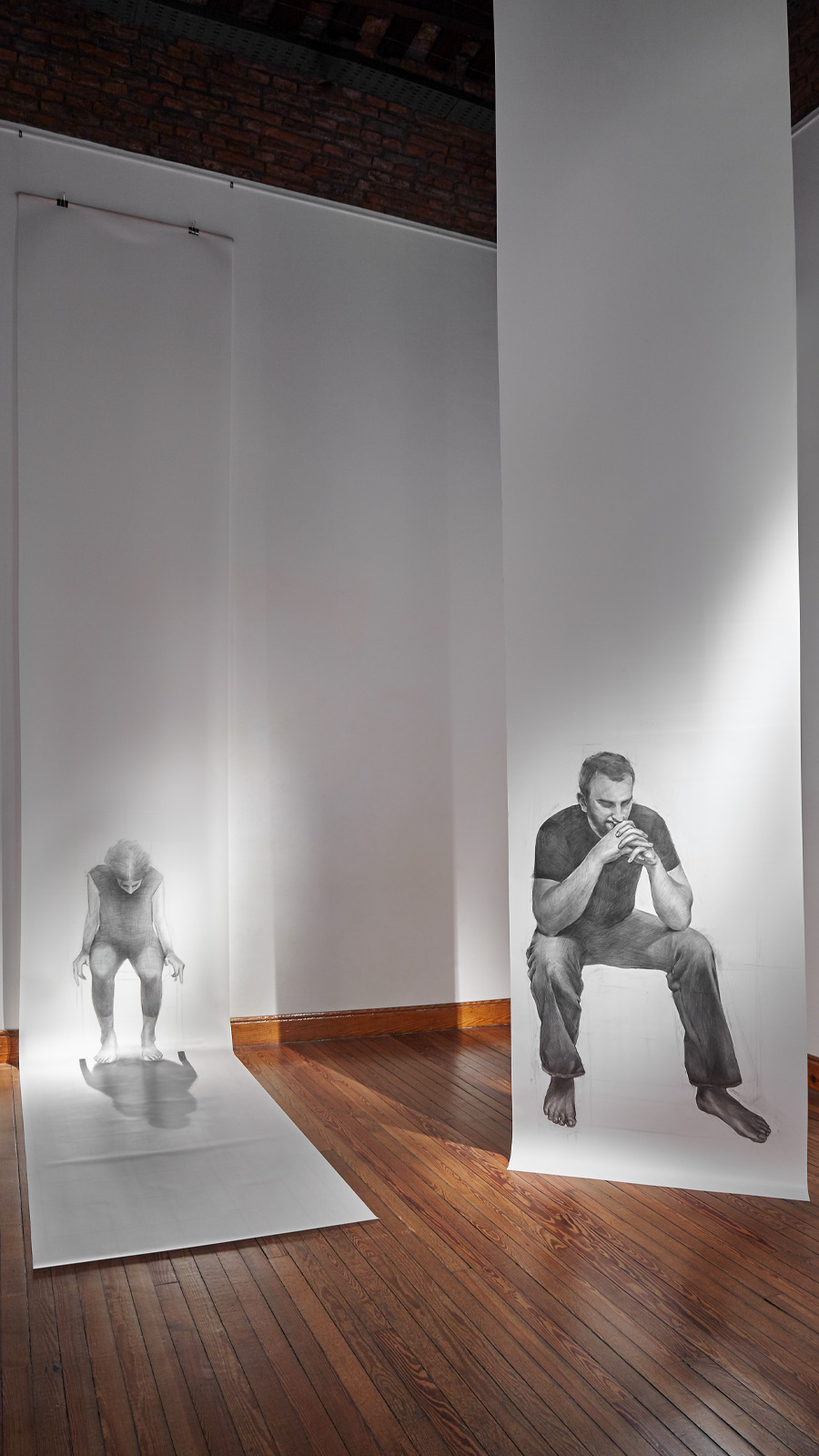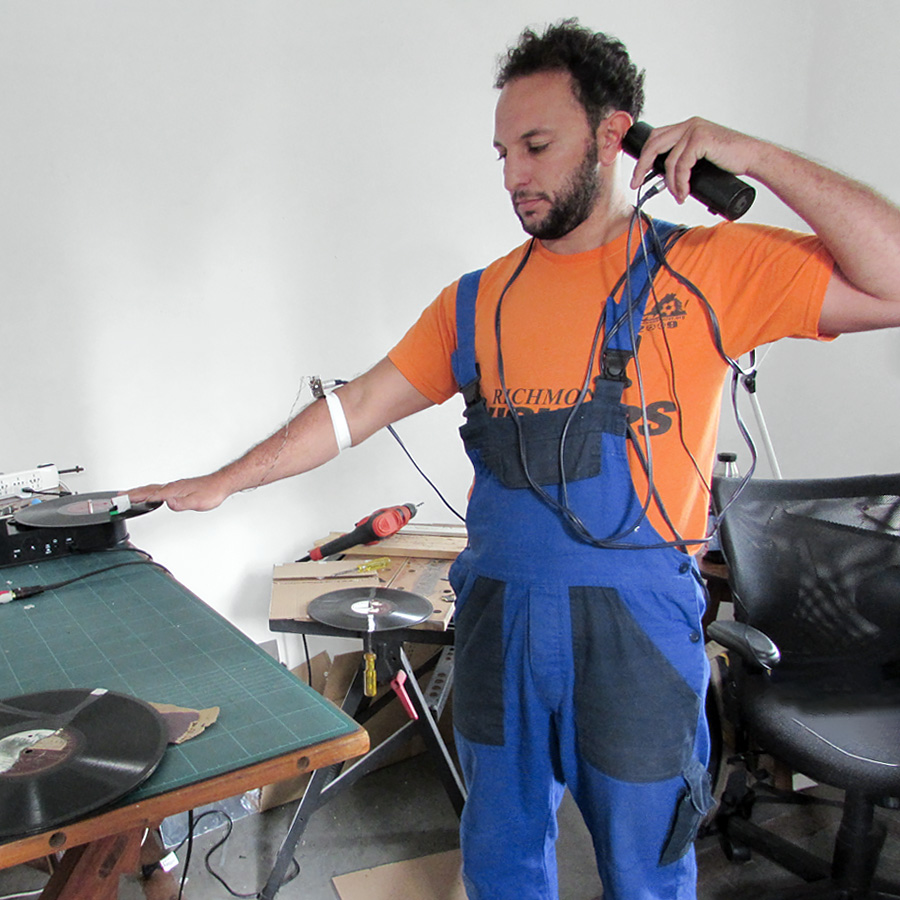Artists
Germany
Ulrich Ludat
orte.lieux.places
13.02.12 02.03.12
Ulrich Ludat is a composer / artist who defines himself as an auditory person and whose domain is, above all, the acoustic world. During his exploration residency and following a Fluxus spirit towards life and art, Ludat explored and immersed himself in the urban space of Buenos Aires, which for him, was the most interesting area of art production. While exploring very different neighborhoods, he recorded sounds and took photographs on three different levels: the underground, the ground level and on the heights of the bridges, in order to compose his final work.
ARTIST’S TESTIMONY
The artistic work (in different forms) is the common thread of my life. It is not because I want to be someone who is (hyper) active as an artist, but life and circumstances seem to “compel” me to do so. In a way “what happens to me” is my trigger as an artist, in this sense, the artistic activity in my life seems to be as necessary for me as, for example, eating, drinking and loving.
I am above all an auditory person. The acoustic world is my main domain: I listen with my eyes and I look with my ears. For me, the recorded sounds generate new virtual / imaginary worlds, which by the way differ greatly from the “real” sounds. If you have an open mind, these will be as real as the “real” ones.
Another field of “activity” in my work is perceiving and working / playing with “fields of force”, or more specifically with “spheres of influence”. The everyday life is deeply affected by these spheres, even if it is consciously or unconsciously. If you change something anywhere, it will surely interfere with a large number spheres, producing a kind of “friction with the virtual atmosphere”. Most of my (long-term) performances refer to these conflict zones where spheres or force fields interfere with each other.
Photography and / or videography – in combination with “audiography” – can be very powerful ways to make visible what appears to be invisible / inaudible. The urban space, although not thought of as such, is, for me, the most interesting area where art “occurs”. That is what I am looking for …
BIO
Ulrich Ludat
1959 | Öhringen, Germany.
Lives and works in Saarbrücken, Germany.
STUDIES
1990 | Bachelor of Music Education. Musikhochschule des Saarlandes. Saarbrücken, Germany.
1986 | French and Music Teachers. Universität des Saarlandes. Saarbrücken, Germany.
Romance Philology, Philosophy and Musicology in Germany and Italy.
OTHERS
1990- 1999 | Teacher in public and private music schools.
1990-2006 | Performer and instrumentalist Amazing Music Ensemble [archeopteryx].
2003 | Luthier invented musical instruments, inclusion of performance elements; multi-channel audio playback; video; films.
ZKM Center for Art and Media Karlsruhe, Germany worked.
His recidency was made possible thanks to the support of Monika A. Haberer, Brigitte Ludat, Valérie Quilez and Saarland-Sporttoto GmbH.
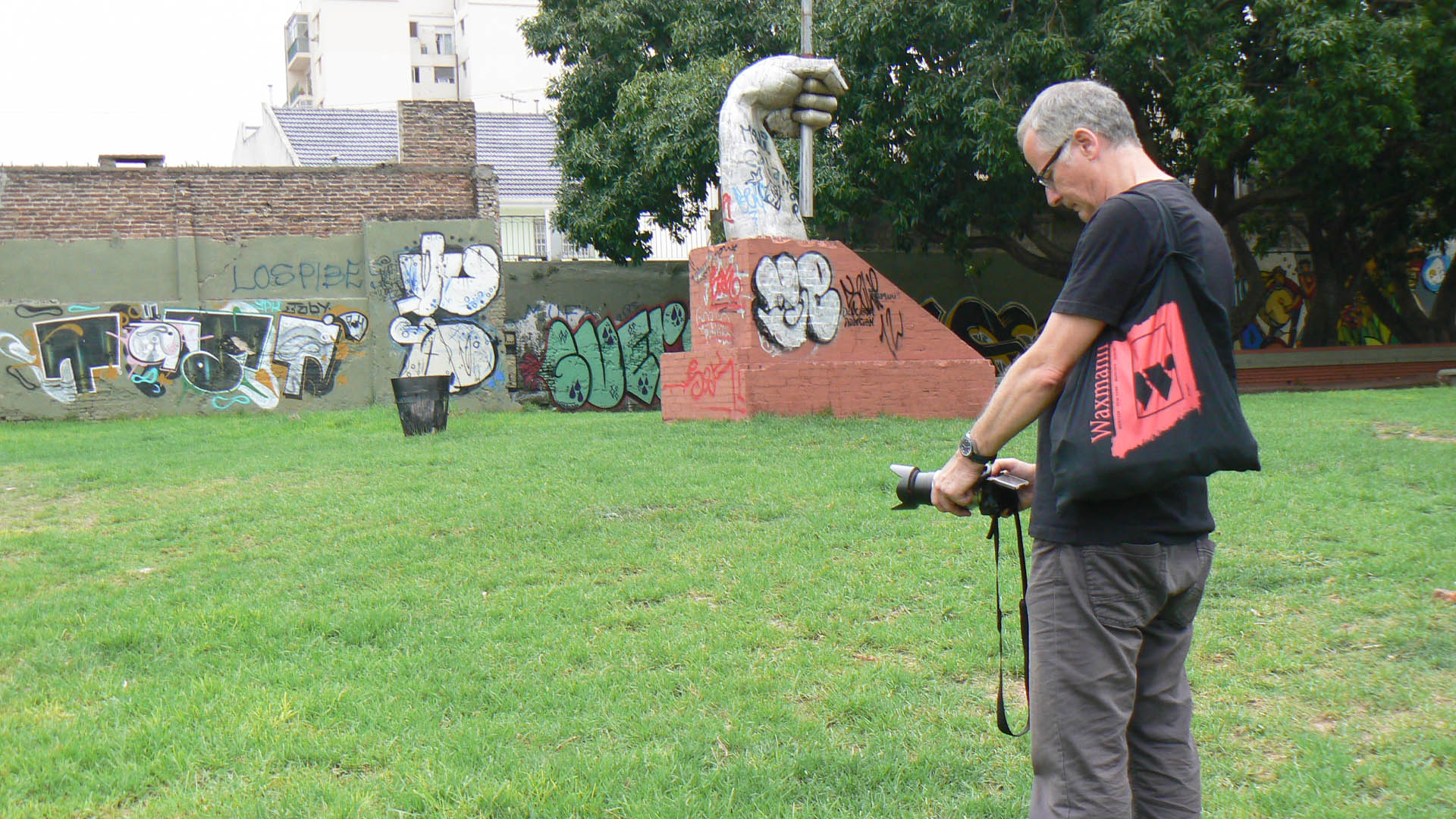

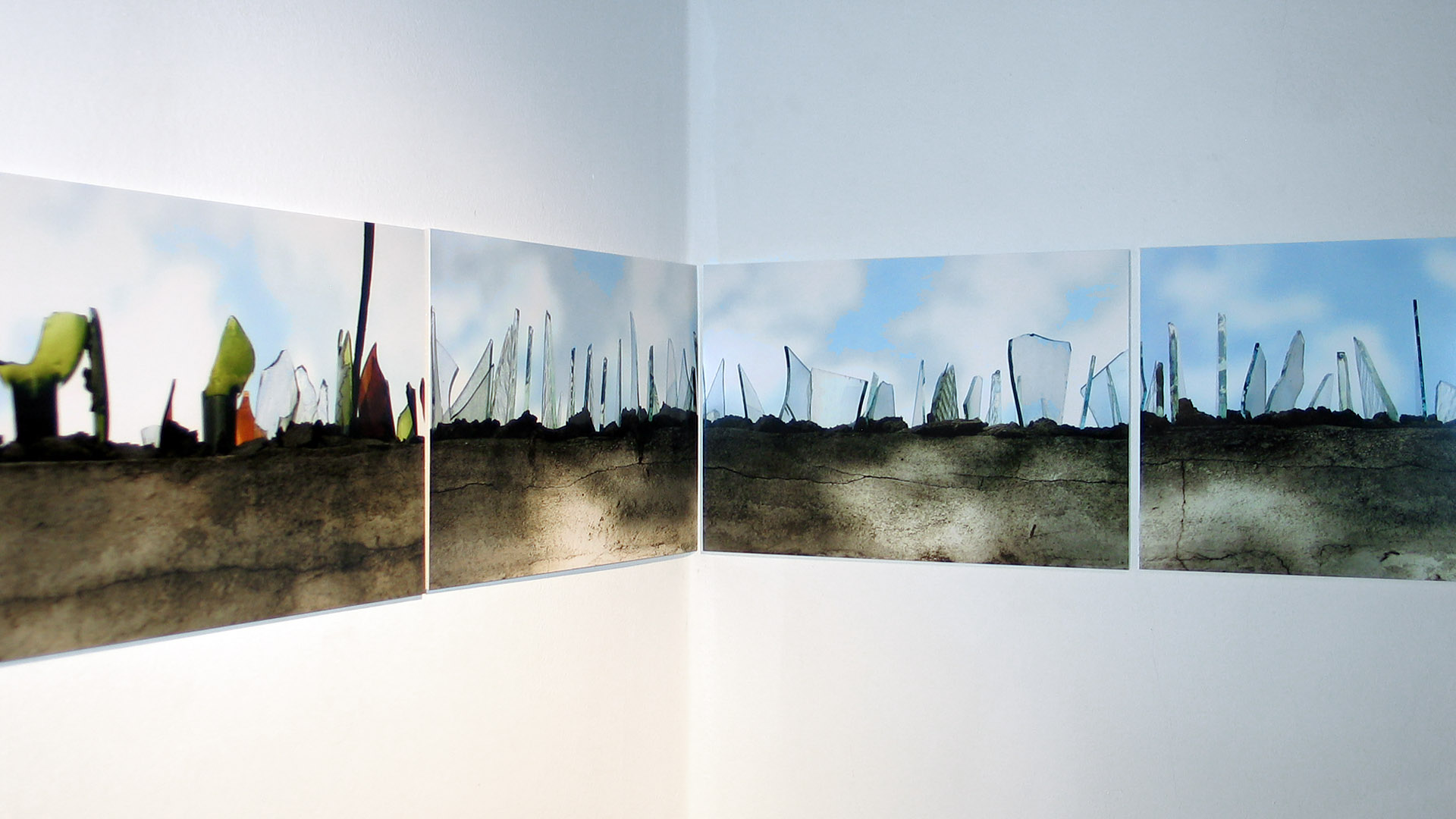
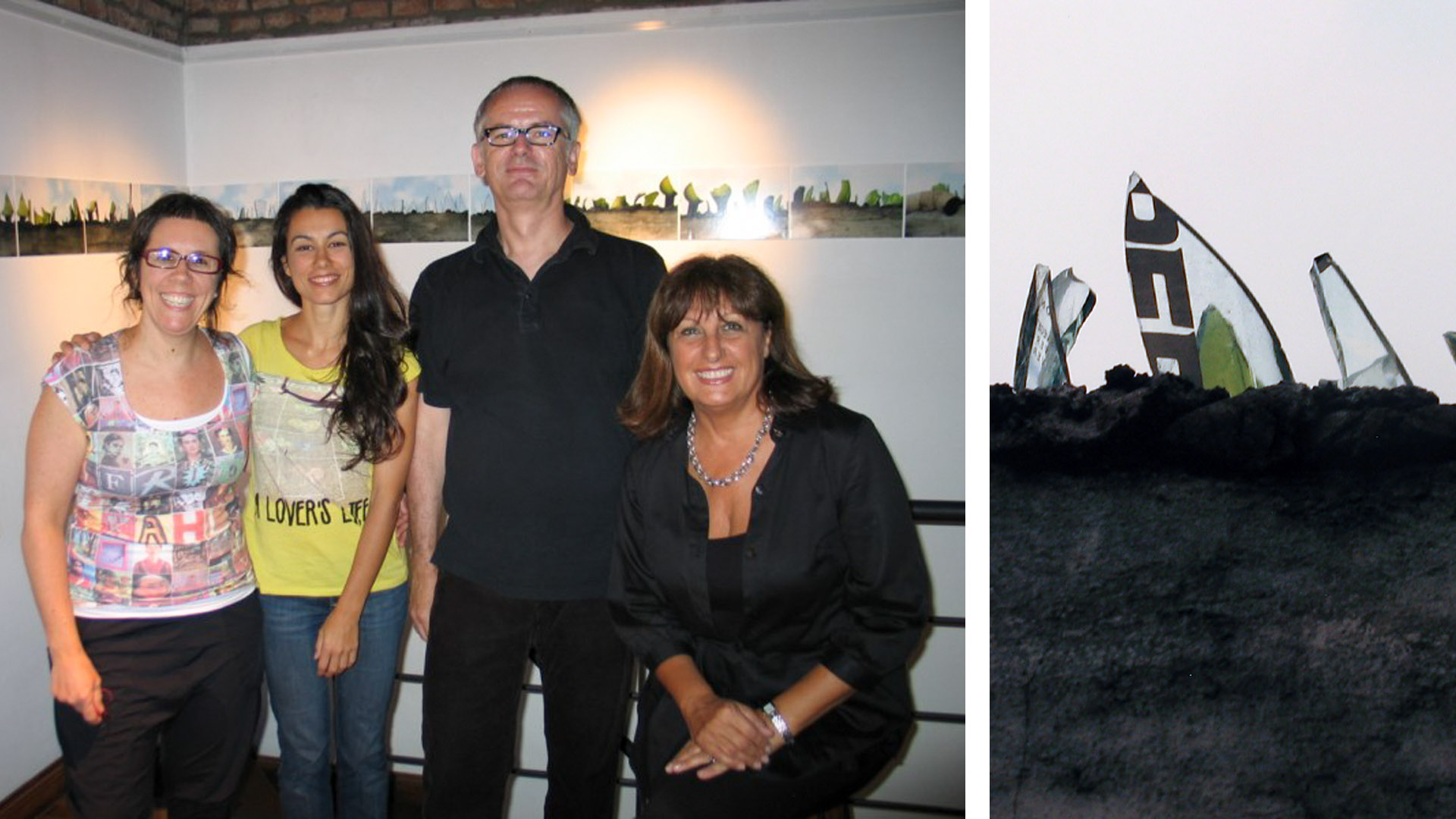
Related Activities
Encounters
orte.lieux.lugares
Ulrich Ludat
01.03.12
In the spirit of Fluxus, John Cage and Joseph Beuys, the German artist and composer Ulrich Ludat, who completed a residence at ´ace during January / February 2012, investigated the unconventional part of artistic creation, seeking interdisciplinarity and the adoption of media and materials from different fields.
Understanding life as a global artistic composition, and working with photography and audiography, Ulrich shows us beauty and poetry in unsuspected places in the city.
Do not miss this presentation of his work and thought, in addition to the possibility of chatting with the artist, on Thursday, March 1 at 5:00 pm in ´ace, Conesa 667, Colegiales, City of Buenos Aires. We wait for you!
FREE AND FREE ENTRY. Confirm attendance at info@proyectoace.org
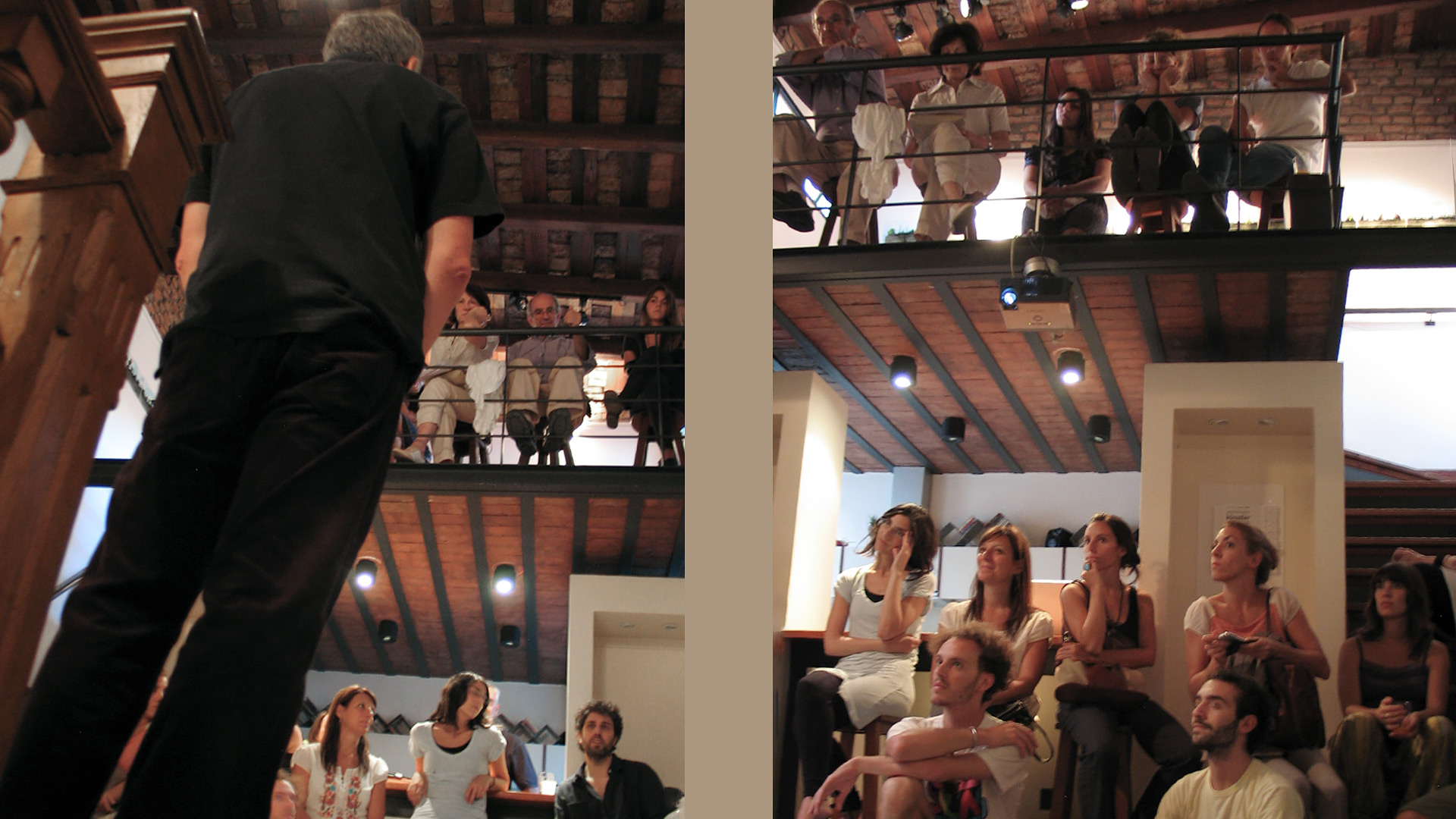

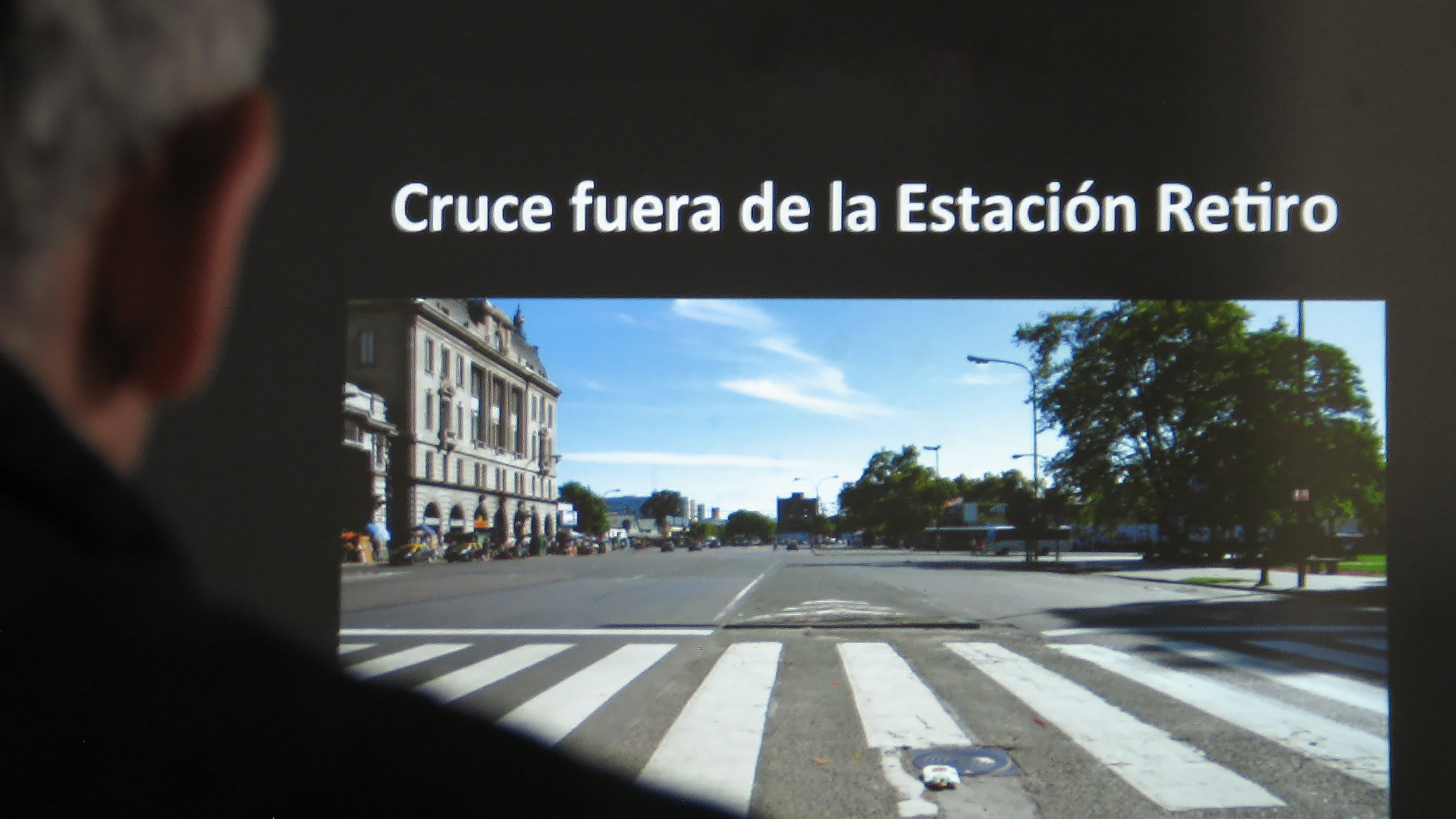
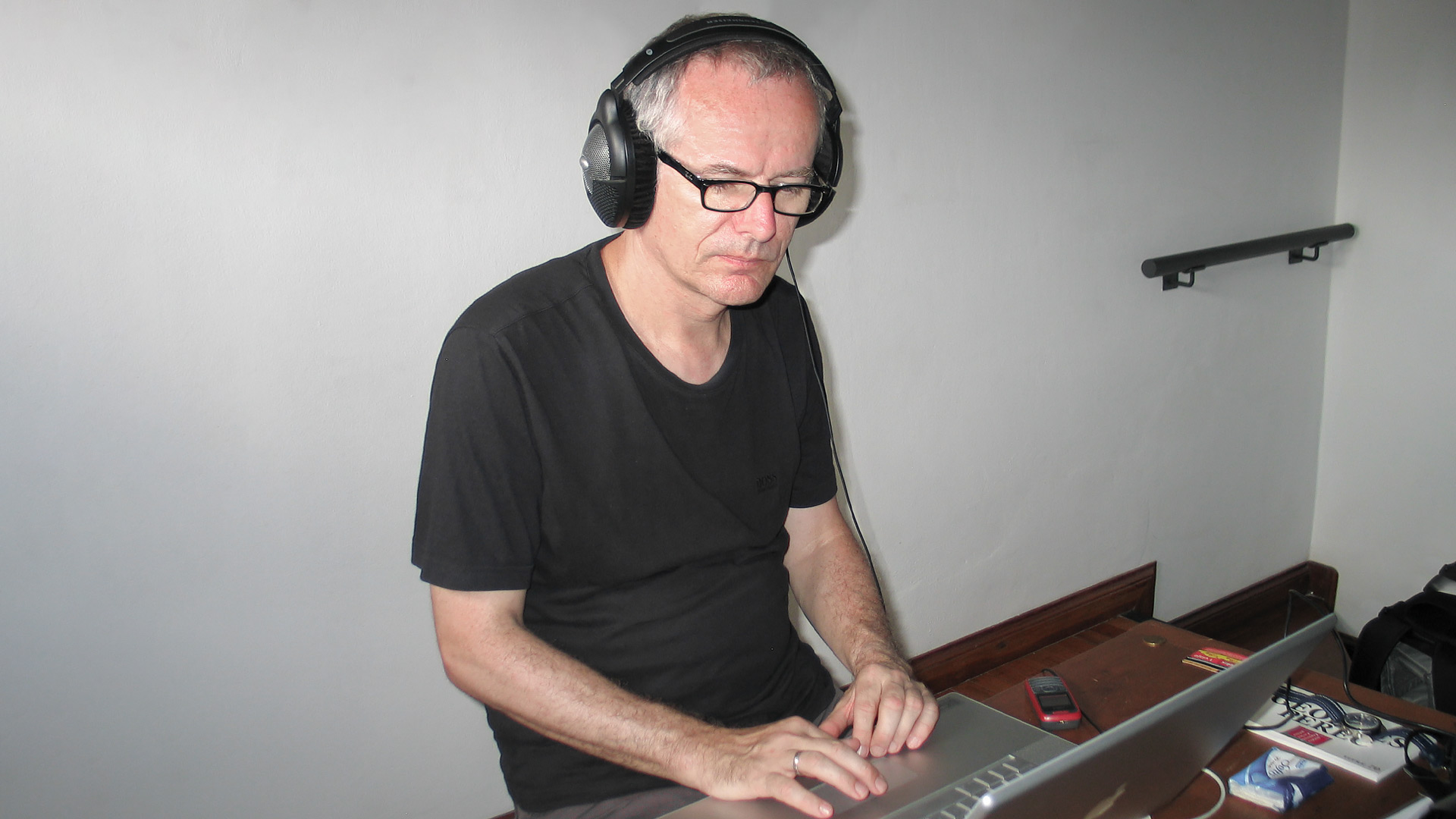
Press review
Argentinisches Tageblatt
Crossing Invisible Limits
Sebastián Loschert
25.01.12
Ulrich Ludat, an artist from Saarbrücken, visits an art residence in Buenos Aires (original in German)
‘ace thanks Sebastián Loschert for writing this article, while visiting ‘ace several times, as well as for his sensibility to share and review Ulrich Ludat’ s artistic work.
The artist Ulrich Ludat, who lives in Saarbrücken, has been wandering through Buenos Aires since mid-January. It is possible that some readers have already noticed it. About him and his “urban wandering”, as he sometimes calls his artistic practice, when taking pictures in the street, with audio recordings in a train station, while listening and observing in the center or in the barrios of the city. Ludat estimates that he has already covered around 300 kilometers of asphalt in the past few weeks – mostly on foot.
Passersby hurry past the fast food table in front of San Martín train station, tourists press their bags closer to their bodies. Apart from Ludat, there are no Europeans in this busy place – just a stone’s throw from the poor settlement of Villa 31, most people find this too risky. Ludat enthusiastically tells at the white plastic table that Buenos Aires offers him the ideal conditions for his artistic work, for his urban exploration project “orte.lieux.places.lugares”. Certainly because of the well-known great cultural offer in this city? Or because of the support from the artist residence to which he was invited? Far from it: “The ideal is that I did not know the city at all and had no time to prepare for my stay.” Without previous knowledge, Ludat wants to sense the city, take it in physically, “incorporate” it, only equipped with a camera and recording device, on foot or in public transport.
The policeman in the police container at the entrance to Villa 31 looks incredulous. Visibly irritated, he asked several times: Whether you absolutely had to go in there, whether you knew someone there, whether you didn’t want to drive around Villa Miseria by bus. He joins a warning chorus that rises from the city of millions and makes it clear: “No entry for strangers. No-go area. ” Nevertheless, Ulrich Ludat’s goal is and remains the chapel of Padre Mugica, who was murdered in 1974, at the other end of the slum, which has a population of over 20,000. We walk along the dusty, narrow main street, on the edges of which are painted and unplastered houses. “Outside of Villa 31, hardly anyone knows where the chapel with Mugica’s tomb is, however everyone knows in here. Officially there are no street names, very well in here. They are two separate worlds, Ludat notes. “That is exactly why I am here: To feel such invisible but noticeable limits in the city.” In view of the “survival art” of the villeros, he admires: “With all problems there is a lot of aesthetics and strong beauty. In any case, it has nothing to do with an eyesore. ”
Losing yourself, slowness and physicality are the three principles Ludat follows in his urban exploration. In concrete terms, this also means blisters on the feet. However, the artist knows that it is worth defying the logic of cities and metropolises: in 2008 and 2009 he already carried out a similar project in Tbilisi, Georgia. He came to places, met people who are invisible to the everyday and car flows of the city. For example, a bizarre informal settlement of Abkhazian refugees, who have made themselves temporary in three 20-story high-rise skeletons outside the city. A kind of delegation was sent to him, the suspicious stranger, before he was received with great hospitality.
His work in Tbilisi, Saarbrücken or Buenos Aires does not have much in common with a traditional bourgeois concept of art, the qualified musician, who later turned to performance art, is happy to admit: “Basically, what I am doing here cannot be depicted at all”. Nevertheless: At the end of the discovery phase, he wants to have found three special places that stand for his view of the city and wants to capture these places with a photo and a half-hour audio track. Maybe it will be the playground in Villa 31, almost crouched just under the expressway just behind the entrance to the settlement, around lunchtime full of noise from children and parents gossiping.
Ludat is working on his project as part of an art residence. He was the first German to receive such an invitation from Fundación´ace, an independent and non-profit space from Buenos Aires. The artist and curator Alicia Candiani launched the residency program in 2005. Since then, 40 artists from Tasmania to Alaska have stopped in the completely renovated manor house in the Colegiales district. Candiani got the idea from her own experience in art residences in China, the USA, Canada, Europe and Latin America – and still benefits from her “double existence” as an artist and foundation director: “You take some ideas with you everywhere, changing your own project a little bit here and something there”she explains as she offers coffee in the kitchen on the first floor. Ulrich Ludat agrees: “Alicia knows from her own experience exactly what the artists need”. In addition to the kitchen – which is of great importance for lunch together – the residence is equipped with a workshop including a print shop, a photo studio, an exhibition room and a small art library.
“It is important to us that the artists come into contact with the city,” continues the director. Therefore, the invited artists would live in downtown, a few kilometers from the foundation building. This philosophy is in the spirit of the Saarbrückerer, who was given a two-room apartment in Retiro: “I am glad that I can have my own apartment. In the house I enjoy a normal living situation, you get everything from the neighbors. I am in the middle of Buenos Aires´life”
Find limits, question limits. We also found the chapel at the other end of Villa 31, thanks to the consistently friendly Barrio residents. In the adjoining property, a crèche for children of drug addicted parents, we were spontaneously invited to eat pizza. A volunteer working there, with her Blackberry phone in hand, said that she had been crossing the shantytown for years without anything happening to her.
If you want to know which three places Ulrich Ludat ultimately chose, you can visit the presentation of his photos and audio recordings with an artist talk. On Thursday, March 1st, from 5 p.m. in Conesa 667, Colegiales.
Argentinisches Tageblatt (lit. “Argentine Daily”) is a German-language weekly newspaper published every Saturday in Buenos Aires, Argentina. Founded in 1878, it is the only regular publication in German in Argentina, serving as a means of diffusion and contact for German, Swiss and Austrian communities.
Sebastian Loschert
1984 | Lohr am Main, Germany
Journalist graduated in Politics Sciences, Sociology and Spanish at the University of Würzburg (Germany) as Magister Artium.

